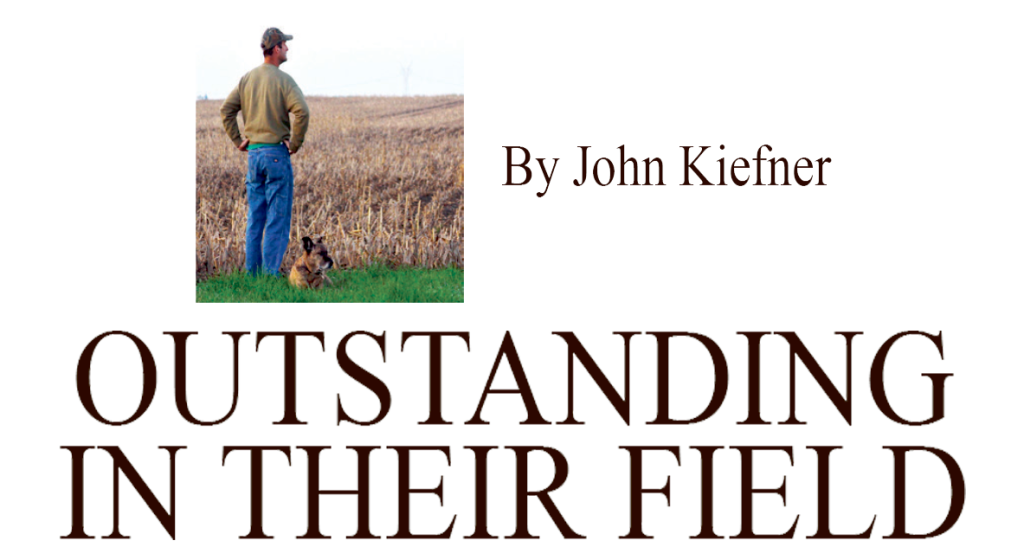Outstanding In Their Field

Drought! This will be the 6th period of drought in my 42 years of farming, and if it does not start raining soon, it will rank with the serious droughts of 1988 and 2012. Now that I am a lot older and wiser than I was in 1982, I know that not all droughts are the same.
In 1988, I remember it being very humid, and there were many sporadic thunderstorms. I know it rained about ¾ of inch on May 24th; hence my daughter who was born on 5-25-88 was nicknamed the “rain baby.” It also rained on 8-8-88 and cancelled the Cubs first ever night game to be held under the lights.
I remember the drought in 2012 started with the nine consecutive days of 80-plus degree weather in March. It even rained 3-plus inches on May 3rd that year, and we could not be in the fields for almost 10 days after. However, both of those years were like most droughts — incredibly hot and dry during the bulk of summer.
This year, the drought had a serious foothold in May, continuing into June, the month most crops are planted and/or in rapid vegetative growth. While baling hay the last 3 weeks, we had multiple days with humidity below 30-40%. We could not bale or rake the hay early enough to have moisture in the windrows, morning dews were nonexistent.
We even received electrical shocks outside while working like you would in your dry house on cold days in winter.
Not all in Will County are under the duress that many other farms are now. On May 31, a band of storms formed in Frankfort and moved south through Monee and Peotone, leaving 1-3 inches of rain and much-needed relief to farm fields that were lucky to be in that 4-6-mile-wide swath of moisture that moved south out of Will County.
The rest of the county has been lucky to receive even an inch of rain since mid-April. On my farm, we were able to bale hay for 25 days straight. As we baled each field, we would find we had brought too many hayracks, the dry weather had reduced yields significantly. I now reason that when we start to bale a field, I estimate what it should yield and then divide it in half to be close to accurate.
It is surprising to see soybeans that have been growing for almost 2 months be only 4”- 6” tall. The corn is also showing the effects of dry soils by being very short and much less robust, given how many days have been above normal temperatures.
I think it safe to say there will not be a repeat of last year’s 200-250 bushel-per acre corn yields. Soybeans still have lots of hope.
If your memory is good, you will remember August 26, that was Sunday of our will county fair in 2012, It started raining about noon and did not quit the rest of the day. A steady light rain from a gulf induced flow of humid Caribbean air delivered 3” of rain. Our parched ground was given some relief, yet the streams barely rose. That was only the beginning. Hurricane Isaac hit the gulf states a couple of days later and delivered another shot of 3-5 inches of rain to the upper Midwest. It was a new start for the crops like soybeans that had withered all summer but stayed alive. It was the equivalent of a super bloom for Will County.
With that, is it wrong for me to wish an early hurricane to hit Texas or Louisiana? Is the shuttering of hundreds of oil rigs and driving gasoline prices wild worth farmers like me having a chance at an abundant flow of moisture?
Or perhaps we can start importing water from China. Sounds silly, but someone is probably trying to do it now while I type.
